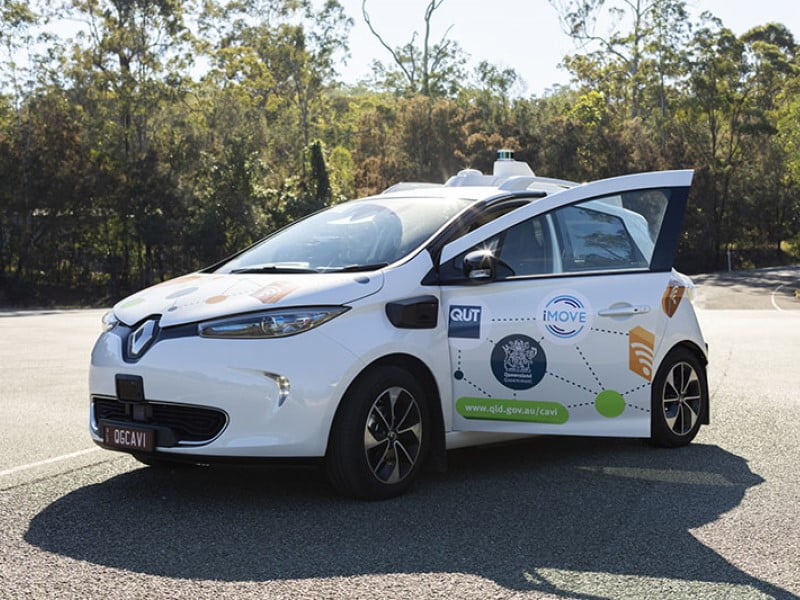The first regional test of Australia’s most advanced automated vehicle was launched in Bundaberg in Queensland last Wednesday by the state’s Minister for Transport and Main Roads.
Prototype autonomous vehicle ZOE2, a retrofitted Renault Zoe, is equipped with lidars, a stereo camera, radar, GPS, and an inertial measurement unit. Classified as having level four autonomy, the car requires no input from a human passenger to drive around a pre-determined route. ZOE2 can reach a top speed of 50km/h when driven autonomously.
Transport minister Mark Bailey said the latest test of ZOE2 was indicative of the state’s research strength.
“In an Australian first, the fully electric car can adapt its speed to a school zone, move through several intersections and summon a driver-less service on a public road. What we’re doing here in Bundy has only been done a handful of times globally – putting this region in the map for new tech,” Mr Bailey said.

This test is part of the $3.4 million Cooperative and Highly Automated Driving Pilot led by Transport and Main Roads Queensland in partnership with the Queensland University of Technology (QUT), the transport co-operative research centre iMOVE, and the Motor Accident Insurance Commission. The first test of ZOE2 took place in mid-2019.
Between June 6 and June 10, 150 people will be able test ride the car. Local residents can register for a 75 minute demonstration here.
Project lead and director of the QUT Centre for Accident Research and Road Safety Professor Andry Rakotonirainy told InnovationAus.com that autonomous vehicle technology is a long way from mass public adoption in Australia.
“There’s lots of things to be done. And this is not just a technical problem. I think the technology is evolving very quickly, but the other things that we have to address is the public perception. After all, we want to improve safety with these automated vehicles, but the public has to understand and accept this technology,” Professor Rakotonirainy said.
“When we ran similar tests on urban roads it was actually well accepted. Initially, we didn’t know because there is lots of research asking their perception of automated vehicle done by questionnaire, people didn’t actually experience it.
“I would say [the early passengers] were feeling positive about the future, not scared at all. Initially when they see the steering wheel moving by itself, it can be daunting, but I’d say after a few minutes they were used to it.”
Professor Rakotonirainy also noted that although the passenger car technology being developed in Queensland is quite advanced, the scale of the work is comparatively small. However, he also noted that ZOE2 is the only project working to develop an autonomous driving system uniquely adapted to Australian roads.
“If you look at what is done in the US, for example, by the former Google company [Waymo] they have like 2000 engineers working on automation and they have hundreds of vehicles ready to do tests, we don’t have that,” Professor Rakotonirainy said.
“We have only one vehicle and a few engineers and professors [working on ZOE2]. Having said that, this is the only passenger car project that is working on something specific to Australian roads. As you probably know, we don’t have vehicle manufacturers in Australia so we have to import vehicles. What we’ve done is we’ve imported this vehicle and we are customising it for Australian conditions.”
Professor Rakotonirainy also highlighted that there remained a number of regulatory issues to be solved before autonomous vehicles could become mainstream.
“If a crash occurs, who is responsible given the car is driving itself? Who would pay the bill? The vehicle manufacturers? If there is a problem on the road, would it be Department of Transport? There’s lots of questions,” Professor Rakotonirainy.
Do you know more? Contact James Riley via Email.

